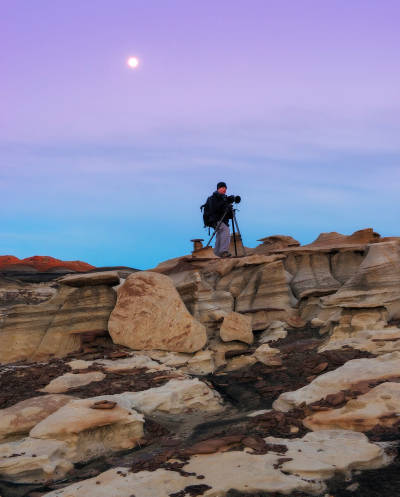A blood moon is another name for a total lunar eclipse — an event that happens when a full moon passes directly through the earth’s shadow. They’re called blood moons because this shadow causes the moon to turn reddish (Or orange or purple, but few people would get excited about a carrot moon or an eggplant moon.). This makes for some spectacular images, and I have some tips for getting the most out of your eclipse shots.

Moon framed by tree. Nikon D810, 600mm f4, 2-shot focal blend, f4.5 @ 1 second, ISO 800. September 27th, 2015.
This shot is two shots overlapping; one to get the moon in focus, and the other to get the leaves in focus. The moon was actually quite dark, so getting it tack sharp was difficult. Having a loupe was essential to get the moon as sharp as possible.

Nikon D810, 600mm f4, f4 @ 1 second, ISO 800. September 27th, 2015.
I was very pleased when I looked at the LCD screen to see the moon on the star field. During the eclipse, I could keep the exposure and focus settings the same through many shots, and it was more about watching the light creep up from the bottom left of the moon as the earth’s shadow began to recede.

Nikon D810, 600mm f4, f4 @ 1 second and 1/320th of a second, 2 shot focal blend, ISO 200. September 27th, 2015.
Creating a composite shot of the moon half in shadow is easy in post production, but impossible if you don’t start with two properly-exposed photos. The first photo was at the previous settings to get the red part of the moon, but that made the lower-left (the unexposed part) of the moon “blown out” on its exposure as the earth’s shadow was already halfway receded. So the second shot was at a very fast 1/320th of a second, which made the bright, lower-left part of the moon correctly exposed, but the red part fully dark.

Nikon D810, 600mm f4, f11 @ 1/100th sec, ISO 200. September 27th, 2015.
The final shot of the night, with the eclipse almost over, and the earth’s shadow inexorably moving up and to the right.
